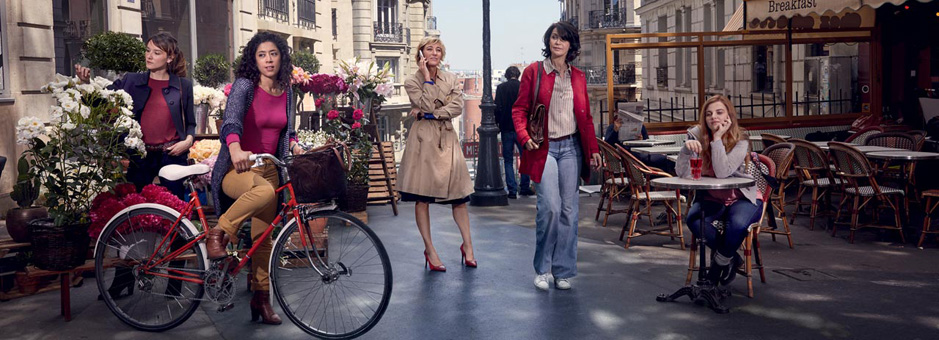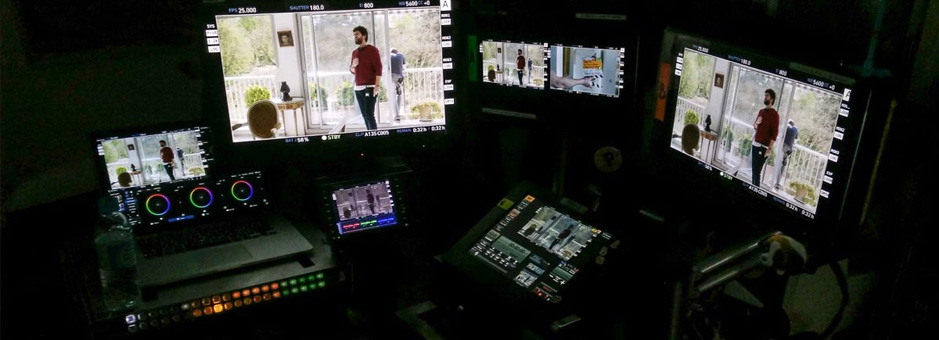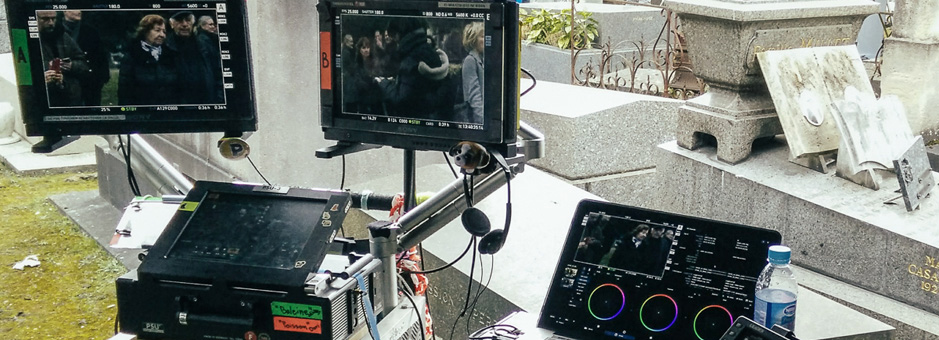Case Studies
Making ‘Paris ETC’
Bringing cinema quality colour to television.
Paris ETC is a new TV series from Canal+. A ‘dramedy’ about five women in Paris, the 12 episodes were conceived by Zabou Breitman and written by Maïwenn and Anne Berest.
Providing the high quality creative impact that audiences expect, while also meeting the tough timescales of broadcast television, was a challenge that director of photography Antoine Roch (AFC), DIT Nejib Boubaker (ADIT) and Le Labo colourist Fabien Napoli all embraced.
“On this project, the post-production was completed over a short period of time, with just a few months between the end of the shooting and the broadcast of the TV series,” said Boubaker. “So the director of photography, Antoine Roch, decided to start the grading process on set.
“He got in touch with me, mentioning that the final grade would be done at Le Labo in Paris, using the Baselight grading system.”
To keep the colour process consistent and gain time, Boubaker pressed for the use of Prelight during the shoot. Prelight is an on-set visualisation and colour grading tool from FilmLight. Critically, it offers not just the same colour science as Baselight, but uses the same Baselight Linked Grade (BLG) file format.
The process is non-destructive. While passing through Prelight, Daylight (FilmLight’s dailies system) and then onto Baselight, the raw camera footage remains intact, with the grade built up in rich BLG metadata that can be handed on to the next system. As well as allowing the grade to be built collaboratively, it captures all the subtlety of the colourist’s art, including adjustments to fine details through windows and layers.
“We could be completely confident that the on-set monitoring would be identical to the grading room projection,” Boubaker explained. “The colourist would be in the same working colour space as us, and all the grading values we established could be modified or removed by the colourist, including shapes and keys. I could deal with any requests from the DoP on set, knowing that this work would be usable by the colourist later on.”
Look away from the Paris clichés
“We wanted to bring cinema quality to a television show, where the shooting rhythm is frantic,” said Antoine Roch, the DoP. “The drama has wandering as its theme: the five women who are the central characters are wandering in the city, their paths crossing without them necessarily knowing it. I wanted to create an image that gave density and a visual identity.”
But although Paris ETC is a contemporary story set in Paris, director Zabou Breitman wanted to get completely away from the tourist clichés of Paris.
Roch took a distinctive approach to the look. “With the director, I established a mood board with images from many different sources. I wanted to define one direction for the hue, the contrast, the style and the visual appearance that unify all the episodes.
“Apart from the night scenes, I decided to use a strong colour filter, and to compensate its effect during the colour correction,” he explained. “This gives an offset to the reality. You can feel the effect of this colour turn, especially in the shadows and highlights.
“To avoid it being too oppressing, we worked with the set and costume designers to remove all the colours that were out of our colour board, and so would not work well with our colour turn. We worked on using a lot of blue and green.”
DoP, DIT and colourist: collaborating to create the colour
Colourist Fabien Napoli was familiar with the work of Roch and director Breitman from his days as a telecine dailies colourist at other Parisian facilities. Now firmly established behind one of the Baselight panels at post house Le Labo, his input was vital to this unusual creative path.
“Camera tests allowed us to experiment with different filters,” Napoli said. “Antoine used many filters and we neutralised their hues in order to keep only the distortions.
“In production, Nejib was doing this neutralisation on set. This saved valuable time because I could re-use this first grading pass.”
Roch used mainly warm filters, like Maui Brown and Glimmer Bronze. The hue shift tool in Prelight and Baselight was then used to correct the saturation or hue of specific colours, without having to define a key or create a shape.
“This is a very fine tool,” Boubaker said. “There were some sequences outside where I would work on the leaves of the trees in just a few clicks on set, and Fabien could access this in Baselight later on.”
Roch is very positive about the role of the DIT in modern production. “What is important is that the DIT helps me to confirm my wishes,” he said. “I can refine my work on set. It is a bit like watching film dailies, but now it is immediate, there is no more waiting time.
“By pre-grading the dailies, the DIT has become an indispensable associate to my creativity,” Roch added. “It makes me feel freer in my decisions – to me it is an unquestionable artistic benefit.”
Finishing colour at Le Labo
For the colourist, the close relationship between DoP and DIT gave them a great deal of autonomy. “Antoine is the DoP, he knew precisely what he wanted – he was the boss. Nejib worked to achieve that.
“The benefit of the BLG file, from a creative point of view, is that it can contain all the feedback from the DoP and director on set,” Napoli explained. “For all the episodes, the look was already very close when the finishing sessions started at Le Labo. The starting point was the colour grading values from the set, so we could watch an identical image to what they saw.
“All the grading values from Prelight were on a single layer, and I could modify or remove them if needed,” he went on. “I used extra layers for my grading, so I could easily compare my work with what they saw on set.
“We only had two days of grading per episode,” said Napoli, emphasising the tight timescales of broadcast television. “We needed to make choices on what to focus on. But because the initial image was identical to the one on set and the one in editorial, we had clear and concise conversations. I had more time for retouches and finishing.”
Directors and DoPs need a clean image to grade
Napoli identified a concern about tight post-production timescales. Shots that traditionally needed to go to a VFX artist – like cleaning up complexion in close-ups, or to remove lighting stands or booms that creep into shot – can provide a distraction. Directors and DoPs, not unreasonably, now demand a clean image at the start of grading.
“A part of what used to be sent automatically to VFX can now be done directly in Baselight, using new tools like paint and grid warp,” Napoli explained. “We have to be able to define quickly what is feasible in Baselight or what is better done in VFX.
“We are witnessing a gradual decrease in the time available for grading,” he said. “The session and the working time of the image have to be optimised differently. The tools evolve and become more productive – and the expectations and requests do the same. It is a natural and daily evolution.”
What is most impressive from this project is the structured yet intimate working relationship between DoP, DIT and colourist. It is clear that each is seen as a creative player and not just a technician.
“It is the same conversation with the DIT as with the colourist,” said Roch. “We speak about image, image again and always image. The final grading becomes a complement of the work already started with the DIT on set, with Prelight providing total transparency between the set and the grading room.
“The result is that we save almost the whole pre-grade process that traditionally happens during the first days of post. And in the grading suite, we start right away on the second pass, refining and changing what worked on an individual shot but not in the continuity of the edit.
“With a show pre-graded on set,” he concluded, “it is the whole grade that gets finer and more precise.”
“By pre-grading the dailies, the DIT has become an indispensable associate to my creativity. It makes me feel freer in my decisions – to me it is an unquestionable artistic benefit.”
Download








